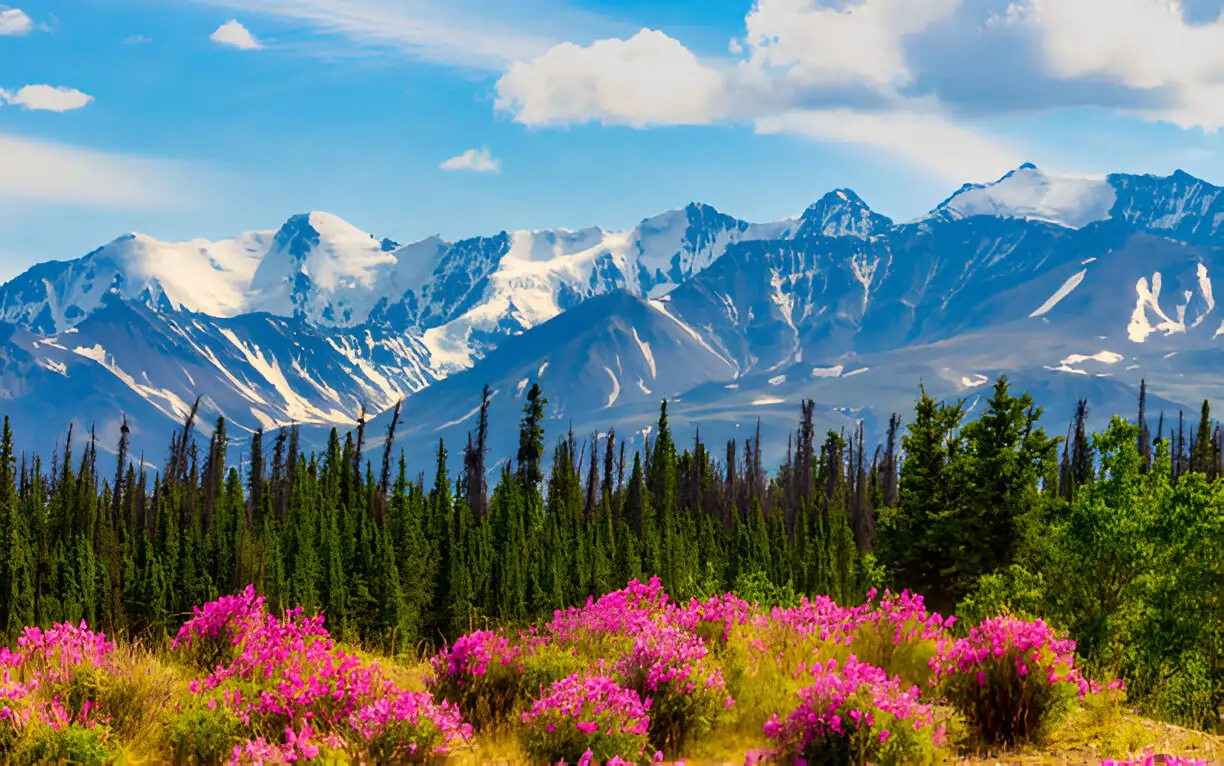Wild Wonders: Discovering Alaska’s Breathtaking National Parks
When it comes to untamed beauty and rugged landscapes, few places on Earth rival the grandeur of Alaska. Often referred to as “The Last Frontier,” this northern state is home to some of the most breathtaking national parks in the United States. From soaring peaks and glacial valleys to abundant wildlife and endless skies, Alaska’s national parks are a haven for nature lovers, adventurers, and anyone looking to disconnect from the modern world. If the wild is calling you, here are the top national parks in Alaska you simply must visit.
1. Denali National Park & Preserve
At the heart of Alaska’s interior lies Denali National Park, home to North America’s tallest peak, Denali (formerly known as Mount McKinley), which towers at 20,310 feet. Spanning over six million acres, Denali offers a diverse landscape of tundra, taiga forests, and snow-covered mountains.
The park is a wildlife enthusiast’s dream. It’s one of the few places where you can see the “Big Five” of Alaska: grizzly bears, wolves, moose, caribou, and Dall sheep. While private vehicles are limited beyond mile 15, the park shuttle system allows visitors to explore deeper into the wilderness. Popular activities include hiking, photography, camping, and even flightseeing for aerial views of Denali’s summit.
2. Kenai Fjords National Park
If dramatic coastal landscapes and marine wildlife top your list, Kenai Fjords National Park is a must-see. Located near Seward on the Kenai Peninsula, this park features glaciers that flow from the Harding Icefield into the fjords below. Watching chunks of ice calve into the ocean is a mesmerizing sight.
Visitors often take boat tours to view the park’s stunning cliffs, waterfalls, and sea life, including whales, puffins, sea otters, and harbor seals. Kayaking is another popular option for a more intimate experience of the icy inlets. The Exit Glacier area offers accessible hiking trails and a rare chance to walk near an active glacier.
3. Glacier Bay National Park & Preserve
Accessible mainly by boat or plane, Glacier Bay is located in southeastern Alaska and is part of a UNESCO World Heritage Site. This park is famous for its towering tidewater glaciers, which frequently calve into the bay with thunderous splashes.
Glacier Bay is a prime location for spotting humpback whales, orcas, and bald eagles. Most visitors experience the park via cruise ship or chartered boat, but kayaking and backcountry camping are also available for the more adventurous. The park’s dynamic landscape offers a powerful reminder of nature’s raw, evolving force.
4. Wrangell–St. Elias National Park & Preserve
As the largest national park in the U.S., Wrangell–St. Elias is a sprawling wilderness that covers over 13 million acres—larger than the country of Switzerland. It’s home to some of the tallest mountains in North America, including Mount St. Elias at 18,008 feet.
This remote park offers a truly wild experience, with few paved roads and vast stretches of untouched land. Visitors can explore historic mining towns like Kennecott, hike glaciers, or take bush plane tours for awe-inspiring aerial views. It’s a destination best suited for those seeking solitude and a deeper connection with the land.
5. Katmai National Park & Preserve
Katmai, located on the Alaska Peninsula, is best known for its brown bear population. The park’s Brooks Falls area provides one of the most iconic bear-viewing opportunities in the world—especially during salmon spawning season when bears are seen catching fish mid-air.
Beyond the bears, Katmai features a landscape shaped by volcanic activity, including the Valley of Ten Thousand Smokes, a dramatic ash-filled region created by a massive eruption in 1912. Getting to Katmai typically requires a floatplane or boat, making the experience even more memorable and remote.
Planning Your Visit
Exploring Alaska requires careful preparation, as the state’s immense size, sparse infrastructure, and variable weather can present unique challenges. Many of its national parks are only reachable by plane or boat, and accommodations or dining options may be limited. Be sure to consult official park websites for the latest updates and safety recommendations.
For the most convenient travel experience, plan your visit during the summer months (June through August), when weather conditions are generally more favorable and access is easiest. While winter offers serene, snow-covered landscapes, many services and facilities shut down during the colder season. If you’re visiting Katmai National Park, consider lodging in King Salmon, a key access point with options for overnight stays and guided excursions into the park.
Answering the Call
Alaska’s national parks are more than destinations—they’re experiences that change how you see the world. Whether you’re standing beneath towering peaks, paddling through icy waters, or locking eyes with a wild bear, the state’s untamed beauty leaves a lasting impression. So pack your gear, answer the call of the wild, and immerse yourself in the raw majesty of Alaska’s national parks.
Read more: How to Protect Your Business from Liability Risks
5 Flexible Financing Tools to Fund Your Commercial Space Project







